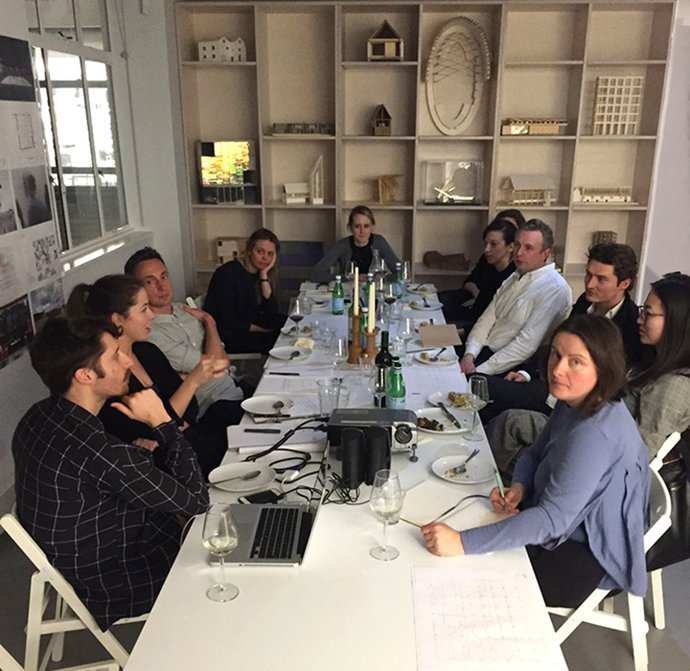Drafters' Dinner Entry 04

Our intention was to make a drawing embodying the individual, sometimes fragmented, experiences of a group of people with dementia in one building during a whole day. At one time, we hoped that we could work directly with people with dementia, all drawing together. Over time, however, it became apparent that this was not feasible. We needed to find a process of drawing through which we could imaginatively inhabit the minds of people whose view of the world is not immediately clear to us. It is the responsibility of architects to imagine the experiences of others and in order to do so, we must fall back on our own experiences. The title of our project, Losing Myself, embodies that principle.
We decided to invite sixteen architects to act as our drafters. Each drafter would place themselves into the mind of one of the building’s users. We would ask them to try to recreate the process of spatial apprehension through the act of drawing. Our role would be to communicate the specific ways in which dementia might impair our ability to synthesise and navigate our environment, based upon our observations and our conversations with people around the subject. We composed a rough score of an intertwined network of journeys through one day and we allocated each drafter their own route. We agreed to collectively establish rules for cohesion, but to encourage improvisation within the drawing technique. We drew up a list of young practitioners who we knew could draw and who possessed an imaginative gift of empathy. Then we invited them to supper in our studio.
In the first part of the evening, we described the project and we outlined many of the issues around the subject of dementia. We discussed time-based drawing and improvisation. I suspect that we bombarded them with a huge range of – sometimes contradictory – information; but architects are good at processing this and a very good discussion emerged. Everyone agreed to come in and join our drawing studio over a period of three weeks. It wasn’t clear to anyone exactly what we would do, but that was, perhaps, the point. The practice of drawing would soon lead to principles of drawing.